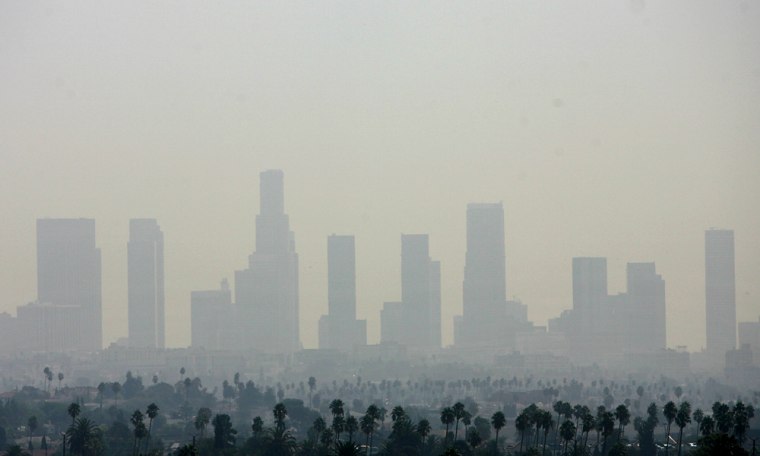By 2020, the United States will emit almost one-fifth more gases that lead to global warming than it did in 2000, increasing the risks of drought and scarce water supplies.
That projection comes from an internal draft report from the Bush administration that is more than a year overdue at the United Nations. The Associated Press obtained a copy Saturday.
The United States already is responsible for roughly one-quarter of the world’s carbon dioxide and other “greenhouse” gases that scientists blame for global warming.
The draft report, which is still being completed, projects that the current administration’s climate policy would result in the emission of 9.2 billion tons of greenhouse gases in 2020, a 19 percent increase from 7.7 billion tons in 2000.
Doing more than slowing the growth rate of greenhouse gas emissions, which remains the administration’s stated goal, will be decided “as the science justifies,” according to the draft report. The biggest source of the gases is the burning of fossil fuels, chiefly oil, coal and natural gas.
Report comes on heels of U.N. statement
But an authoritative U.N. report last month from hundreds of scientists and government officials said global warming is “very likely” caused by mankind and that climate change will continue for centuries even if heat-trapping gases are reduced. That report was approved by 113 nations including the United States.
It was the strongest language ever used by the Intergovernmental Panel on Climate Change, whose last report came in 2001.
Despite the dire outlook, most scientists say huge sea level rises and the most catastrophic storms and droughts may be avoided if strong action is taken soon.
“We’re on a path to exceeding levels of global warming that will cause catastrophic consequences, and we really need to be seriously reducing emissions, not just reducing the growth rate as the president is doing,” Michael MacCracken, chief scientist at the nonpartisan Climate Institute in Washington, said Saturday. Until 2001, he coordinated the government’s studies of the consequences of global warming,
The administration’s internal draft covers inventories of carbon dioxide and other greenhouse gases, projected environmental consequences and policies to limit emissions and risk. The New York Times reported on the draft in Saturday’s editions.
Delayed by ‘interagency review process’
The White House Council on Environmental Quality has been coordinating the draft report. A spokeswoman, Kristen Hellmer, said it “will show that the president’s portfolio of actions and his financial commitment to addressing climate change are working. And the president is always looking at ways to address our energy security and environmental needs.”
Hellmer blamed the delay in completing the fourth U.S. Climate Action Report on the “extensive interagency review process” the draft must go through. The report, which was due no later than Jan. 1, 2006, is required under the U.N. Framework Convention on Climate Change.
Among the consequences of a warming world anticipated in the report is “a distinct reduction in spring snowpack in the northwestern United States,” which supplies much of the water in that region, the report says.
Critics say U.S. evading an ‘honest statement’
Warmer temperatures expected from more greenhouse gases would only “exacerbate present drought risks in the United States by increasing the rate of evaporation,” it says.
Rick Piltz, director of Climate Science Watch, a nonprofit watchdog program, said Saturday he expects the final report will evade a full discussion of how global warming might affect the nation.
“I think it is very likely that the main reason the report has been held up for more than a year beyond the deadline is because the administration is reluctant to make an honest statement about likely climate change impacts on this country,” said Piltz, a former senior associate with the federal Climate Change Science Program.
The U.S. spends $3 billion a year to research technologies to cut global warming and $2 billion on climate research. Bush has formed a partnership with Australia, China, India, Japan and South Korea — producers of half the world’s greenhouse gases — to attract private money for cleaner energy technologies. He envisions using more hydrogen-powered vehicles, electricity from renewable energy sources and clean coal technology.
Shortly after taking office, Bush rejected the 1997 Kyoto Protocol, a U.N. treaty that requires industrial nations to cut global warming gases by 2012 by an average 5 percent below 1990 levels.
He argued that cutting the U.S. share to below 6 billion tons a year, as the treaty would have required, would have cost 5 million U.S. jobs. He objected, too, that such high-polluting developing nations as China and India are not required to reduce emissions.
